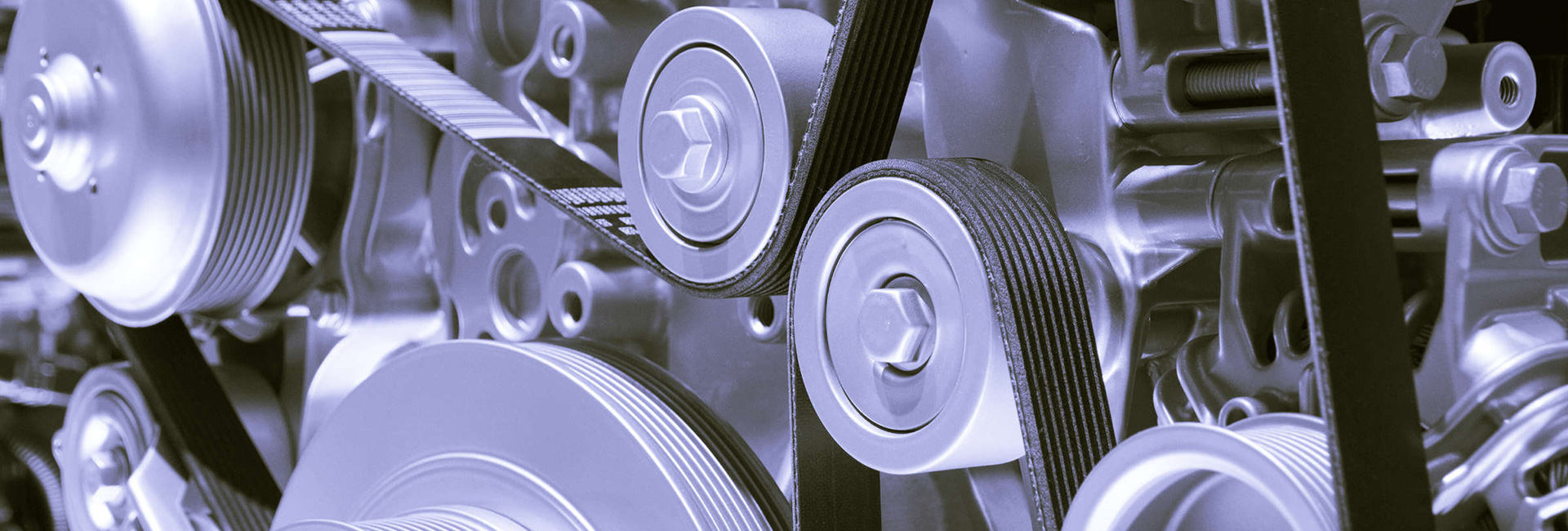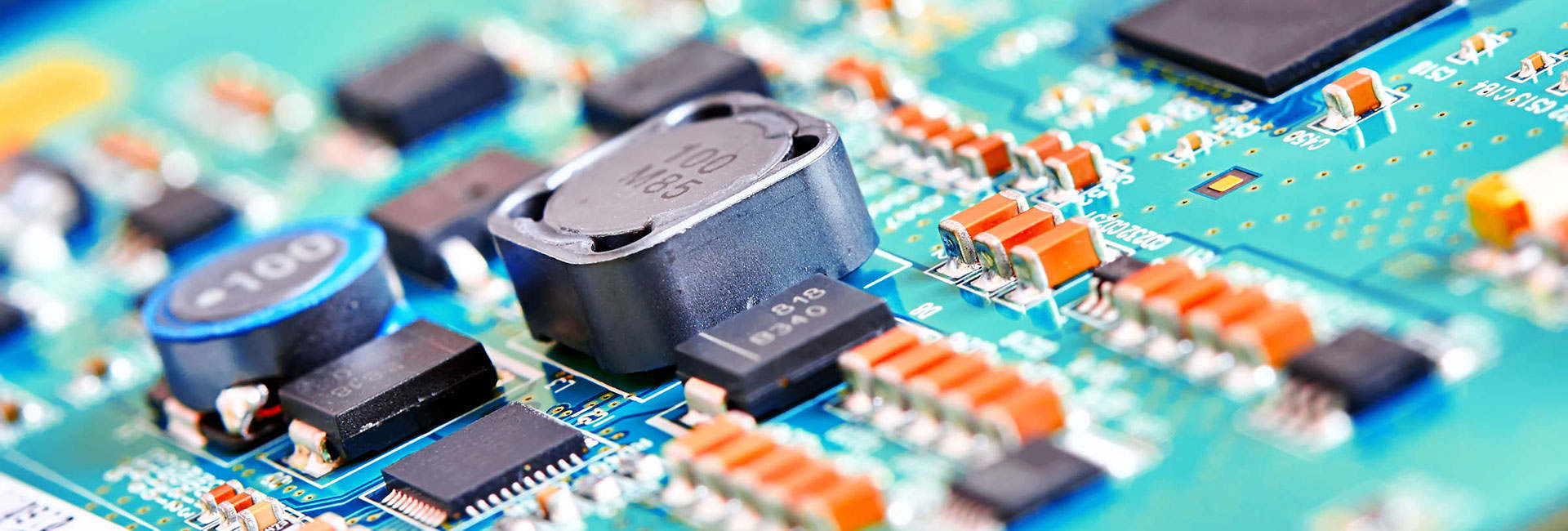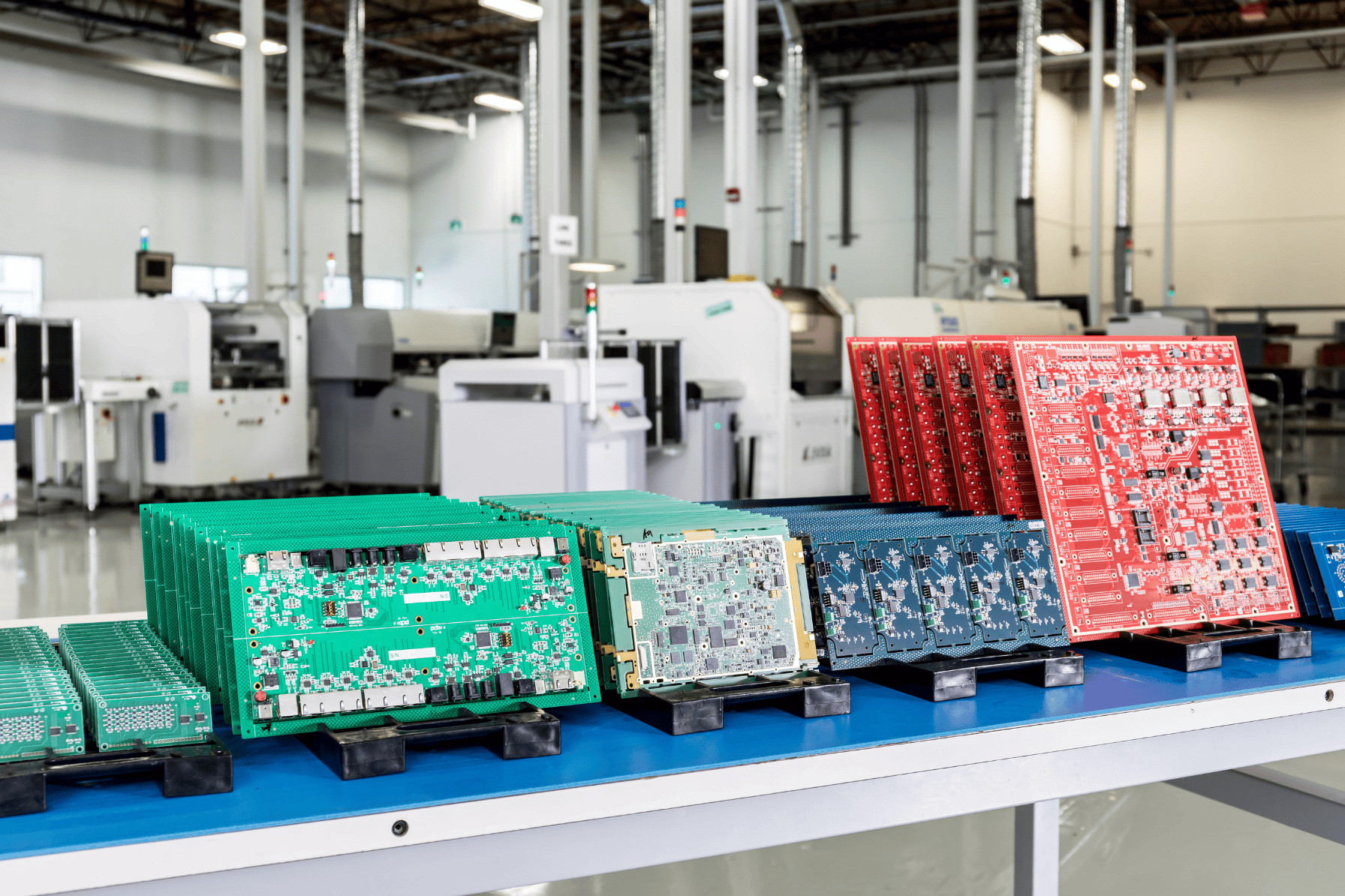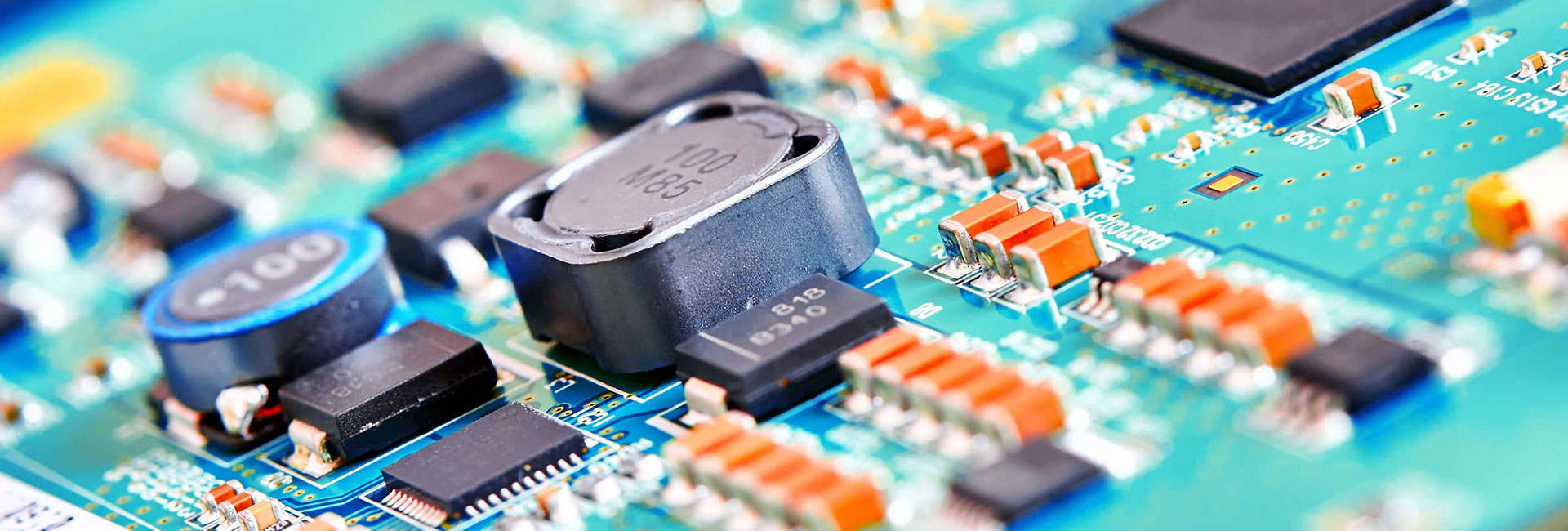
The B2B platform for the best purchasing descision. Identify and compare relevant B2B manufacturers, suppliers and retailers
Close
Filter
Result configuration
Continents
Select continent
Locations
Result types
Company type
Select company type
Industries
Select industry
Company status
Select company status preset
Number of employees
Min.
Max.
Founding year
Regent Rich Capacitors Pvt Ltd
Gurugram, India
D
51-100 Employees
2004
Key takeaway
The company is a leading distributor of electronic and electrical components in India, offering a wide range of products including capacitors, power supplies, circuit breakers, and more. With a strong focus on R&D and high-quality offerings, they represent world-class manufacturers and are committed to innovation in the component industry.
Reference
Product
Electronic Components
LCSC
Shenzhen, China
D
251-500 Employees
2011
Key takeaway
The company offers a wide range of electronic components, including interface ICs, optocouplers, LEDs, infrared power management ICs, capacitors, resistors, and connectors. Their online platform, LCSC Electronics, provides easy access to these components for purchasing.
Reference
Product
Buy Electronic Components Online - LCSC Electronics
Express Technology Group
Town of Islip, United States
B
11-50 Employees
-
Key takeaway
Express Technology Group positions itself as a reliable supplier of high-quality electronic components from leading brands, emphasizing their commitment to authenticity and quality.
Reference
Core business
Wholesale Electronic Components Distributor & Parts Supplier- Express Technology
Looking for more accurate results?
Find the right companies for free by entering your custom query!
25M+ companies
250M+ products
Free to use
www.xecor.com
Tokyo, Japan
A
101-250 Employees
2014
Key takeaway
Xecor is a prominent electronic components distributor in Japan, offering a wide range of high-quality components and solutions tailored to meet diverse enterprise needs. Their commitment to stable supply chains and efficient delivery ensures a reliable source for rare electronic components, essential for maintaining uninterrupted production operations.
Reference
Core business
Electronic Components Distributor | Xecor
Welcome to ECMJ-TECHNOLOGY
Wuhan, China
D
1-10 Employees
-
Key takeaway
ECMJ Technology Co., Ltd specializes in electronic components and industrial control products, offering a wide range of items such as DSP, MCU, Memory, and more. With over 10 years of experience, the company aims to reduce procurement costs and risks for customers, making their selection process easier.
Reference
Product
Electronic Components & Industrial Control parts
Legacy Components
Tampa, United States
B
11-50 Employees
2011
Key takeaway
The company is a trusted distributor of electronic components, actively managing long lead time parts from renowned manufacturers like TI, Onsemi, and Panasonic. They emphasize their inventory's traceability to original manufacturers and their qualifications through testing services, catering to industrial automation and defense applications.
Reference
Core business
Electronic Components Distributor
JPR Electronics Limited
Dunstable, United Kingdom
A
11-50 Employees
1979
Key takeaway
JPR Electronics is a certified supplier of electronic components, offering a wide range of products from recognized manufacturers, including capacitors and various types of switches. Their commitment to flexibility and competitive pricing, along with scheduled delivery and customized packaging, makes them a valuable resource for manufacturers and designers in need of electronic components and accessories.
Reference
Core business
UK Electronic Component Supplier | JPR
Asourcing Electronics Limited
Kowloon, China
D
11-50 Employees
2012
Key takeaway
The company, Asourcing Electronics, specializes in providing a wide range of electronic components, including ICs, capacitors, resistors, diodes, and transistors. They also focus on hard-to-find and obsolete components, ensuring customers have access to high-quality products.
Reference
Core business
Electronic Components Supplier and Distributor in China - Asourcing Electronics
Tomson Electronics Private Limited
Kochi, India
D
11-50 Employees
1988
Key takeaway
The company is a trusted supplier of electronic components, offering a wide range from resistors to single-chip computers, catering to the DIY culture and robotics community in Kochi, Kerala. With a commitment to quality and excellent customer service, they provide a large collection of components, ensuring fast shipping and delivery.
Reference
Product
EE 2507 CF 139 EE Core – TOMSON ELECTRONICS
Distributor of Electronics components, largest collection of components in India for DIY, Embedded, Engineering, Robotics, Manufacturing Order online now and experience our Same day shipping and Hyperlocal Delivery features across India. Best Electronics Shop near you in Kerala India.

Odyssey Electronics
Tewksbury, United States
B
- Employees
1992
Key takeaway
Odyssey Electronics LTD specializes in providing high-quality automotive and aerospace electronic components, including connectors, ICs, and more. With over 30 years of experience, they are a trusted distributor known for their fast delivery and exceptional customer service.
Reference
Core business
Electronic Components Distributor - Odyssey Electronics
Electronic components distributor with a wide selection of high-quality electronic components and hard to find electronic parts. Member ERAI and Woman Owned
Technologies which have been searched by others and may be interesting for you:
A selection of suitable products and services provided by verified companies according to your search.

Service
Automotive Engineering
Go to product

Service
Custom Electronics
Go to product

Service
PCB assembly
Go to product
A selection of suitable use cases for products or services provided by verified companies according to your search.

Use case
Custom Electronic Design
automotive, E-mobility, automation, industrial automation, machinery, industrial machinery, smart industry, industry 4.0
Electronic design frameworks Electronic design starts from the component layout specification. Also, it consists in the definition of interconnections and PCB technology. Finally, component selection is formalized (BOM, Bill of Material), such as the circuit schematics and the layout of PCB traces (gerber file). If the Electronc Systems is composed of multiple circuit boards, electronic design includes the description of the interconnection schemes, and the instructions for the wiring manufacturing. Adgenera develops electronic circuits tailored and suitable for any application. It selects the most valuable technology for the peculiar field of application, in order to ensure the maximum reliability. Electronic design frameworks Custom-designed electronic solutions can be found in many sectors, covering various fields of application and meeting Client needs. The most frequent requests are: design “from the scratch” miniaturization of an existing circuit board cost Reduction electronic board update, when components are no longer available engineering a prototypal board, either partially or completely working functional improvement (for example, adding a wireless interface) performance improvement (for example, power consumption reduction) Other elements increase the complexity of the electronic design: legacy firmware for the previous version of board need for a custom / legacy interface to other electronic existing systems availability of the components on the market within a certain amount of time project constraints due to standards or certifications The steps of the Electronic Design Electronic design aims to respond to the request of designing and producing electronic circuit boards. First, the customer is interviewed on the characteristics of the electronic system to be designed.. The customer is actively involved to identify the best design choices. This preliminary phase leads to the correct identification of development times and costs, allowing the customer to verify the compliance with his needs and to create a preliminary project planning. Now the electronic scheme can be designed. Specific skills of our designers are applied to correctly select and size the components. Once the scheme has been designed, the electronic components available on the market are selected. Then, they will be soldered to the electronic board during its production phase. We select the most suitable package of components depending on the layout, the space available and the type of application. This design phase leads a draft of the BOM (Bills of Materials) necessary to supply and solder the right components. The electronic components chosen are placed on the board surface. Their positions strictly match design constraints principles to guarantee the correct functioning of the electronic system. Usually several alternative arrangements are evaluated. Finally, the chosen one is the one that leads to the best result once the electronic card is produced. Once the components are finally placed in the board, it is necessary to draw the connections (tracks) that appropriately connect the pins of the components themselves. The tracks design needs to follow many rules and best practices: although there are infinite ways to connect the chosen components, only a few solutions guarantee a good quality card. The preliminary electronic design project is ready: the first board samples are created to check the functionality and performance of the designed electronic system in the laboratory. During the tests, the laboratory instrumentation verifies that each quantity measurable on the card corresponds to the value theoretically calculated during the electronic scheme design.

Use case
Custom Electronic Design
automotive, E-mobility, automation, industrial automation, machinery, industrial machinery, smart industry, industry 4.0
Electronic design frameworks Electronic design starts from the component layout specification. Also, it consists in the definition of interconnections and PCB technology. Finally, component selection is formalized (BOM, Bill of Material), such as the circuit schematics and the layout of PCB traces (gerber file). If the Electronc Systems is composed of multiple circuit boards, electronic design includes the description of the interconnection schemes, and the instructions for the wiring manufacturing. Adgenera develops electronic circuits tailored and suitable for any application. It selects the most valuable technology for the peculiar field of application, in order to ensure the maximum reliability. Electronic design frameworks Custom-designed electronic solutions can be found in many sectors, covering various fields of application and meeting Client needs. The most frequent requests are: design “from the scratch” miniaturization of an existing circuit board cost Reduction electronic board update, when components are no longer available engineering a prototypal board, either partially or completely working functional improvement (for example, adding a wireless interface) performance improvement (for example, power consumption reduction) Other elements increase the complexity of the electronic design: legacy firmware for the previous version of board need for a custom / legacy interface to other electronic existing systems availability of the components on the market within a certain amount of time project constraints due to standards or certifications The steps of the Electronic Design Electronic design aims to respond to the request of designing and producing electronic circuit boards. First, the customer is interviewed on the characteristics of the electronic system to be designed.. The customer is actively involved to identify the best design choices. This preliminary phase leads to the correct identification of development times and costs, allowing the customer to verify the compliance with his needs and to create a preliminary project planning. Now the electronic scheme can be designed. Specific skills of our designers are applied to correctly select and size the components. Once the scheme has been designed, the electronic components available on the market are selected. Then, they will be soldered to the electronic board during its production phase. We select the most suitable package of components depending on the layout, the space available and the type of application. This design phase leads a draft of the BOM (Bills of Materials) necessary to supply and solder the right components. The electronic components chosen are placed on the board surface. Their positions strictly match design constraints principles to guarantee the correct functioning of the electronic system. Usually several alternative arrangements are evaluated. Finally, the chosen one is the one that leads to the best result once the electronic card is produced. Once the components are finally placed in the board, it is necessary to draw the connections (tracks) that appropriately connect the pins of the components themselves. The tracks design needs to follow many rules and best practices: although there are infinite ways to connect the chosen components, only a few solutions guarantee a good quality card. The preliminary electronic design project is ready: the first board samples are created to check the functionality and performance of the designed electronic system in the laboratory. During the tests, the laboratory instrumentation verifies that each quantity measurable on the card corresponds to the value theoretically calculated during the electronic scheme design.
An electronic component is a basic discrete device or physical entity in an electronic system that can affect electrons or their associated fields. These components are essential in the construction of electrical circuits, serving various functions such as resisting, storing, or controlling electrical signals. Common types of electronic components include resistors, capacitors, diodes, and transistors, each contributing to the overall operation and functionality of electronic devices. Understanding these components is crucial for designing and troubleshooting electronic systems effectively.
Electronic components function as the building blocks of electronic circuits, each serving a specific role. For example, resistors limit current flow, capacitors store and release electrical energy, and diodes allow current to flow in one direction only. These components interact based on their electrical properties, such as resistance, capacitance, and inductance, to perform tasks like amplification, filtering, and signal processing. By combining different electronic components, engineers can design circuits that manipulate electrical signals to achieve desired outcomes in various applications, from simple devices like calculators to complex systems like computers and smartphones.
1. Passive Components
These components do not require external power to operate. They include resistors, capacitors, and inductors, which are essential for controlling current and voltage within circuits.
2. Active Components
These are components that require power to operate and can amplify or control electrical signals. Examples include transistors, diodes, and integrated circuits, which play crucial roles in various electronic applications.
3. Electromechanical Components
These components combine electrical and mechanical processes. Relays and switches are common examples that help control circuits by opening or closing connections.
4. Sensors
Sensors detect physical phenomena and convert them into electrical signals. Common types include temperature sensors, pressure sensors, and motion detectors, used in various applications for monitoring and automation.
5. Connectors
Connectors are used to join electrical circuits together. They ensure reliable connections between different components, facilitating communication and power transfer in electronic systems.
Electronic components play a crucial role in modern devices by enabling functionality and performance. They serve as the building blocks for circuits, allowing for the manipulation of electrical signals. Components such as resistors, capacitors, diodes, and microcontrollers facilitate essential operations, from power management to data processing. In addition, the miniaturization of electronic components has significantly contributed to the development of compact and lightweight devices. This advancement is vital for the increasing demand for portable technology in smartphones, laptops, and wearable gadgets. The reliability and efficiency of these components directly impact the overall performance and longevity of modern electronics.
Choosing the right electronic component for a project involves several critical considerations. First, assess the specifications required for your application, such as voltage, current, and power ratings. Each component must meet these criteria to function reliably within the intended parameters. Next, evaluate availability and sourcing options. It’s essential to select components that are readily available from reputable suppliers to avoid delays in your project. Additionally, consider the cost and supplier reputation . Opt for suppliers known for quality and support, as this can impact the overall success and longevity of your project.
Some interesting numbers and facts about your company results for Electronic Component
| Country with most fitting companies | United States |
| Amount of fitting manufacturers | 6474 |
| Amount of suitable service providers | 4627 |
| Average amount of employees | 11-50 |
| Oldest suiting company | 1979 |
| Youngest suiting company | 2014 |
20%
40%
60%
80%
Some interesting questions that has been asked about the results you have just received for Electronic Component
What are related technologies to Electronic Component?
Based on our calculations related technologies to Electronic Component are Water/Ocean Cleaning Technologies, Waste Management, Renewable Energy, Sustainable Fashion, Smart Grid
Which industries are mostly working on Electronic Component?
The most represented industries which are working in Electronic Component are Electronics and Electrical engineering, Other, IT, Software and Services, Semiconductor, Automation
How does ensun find these Electronic Component Suppliers?
ensun uses an advanced search and ranking system capable of sifting through millions of companies and hundreds of millions of products and services to identify suitable matches. This is achieved by leveraging cutting-edge technologies, including Artificial Intelligence.